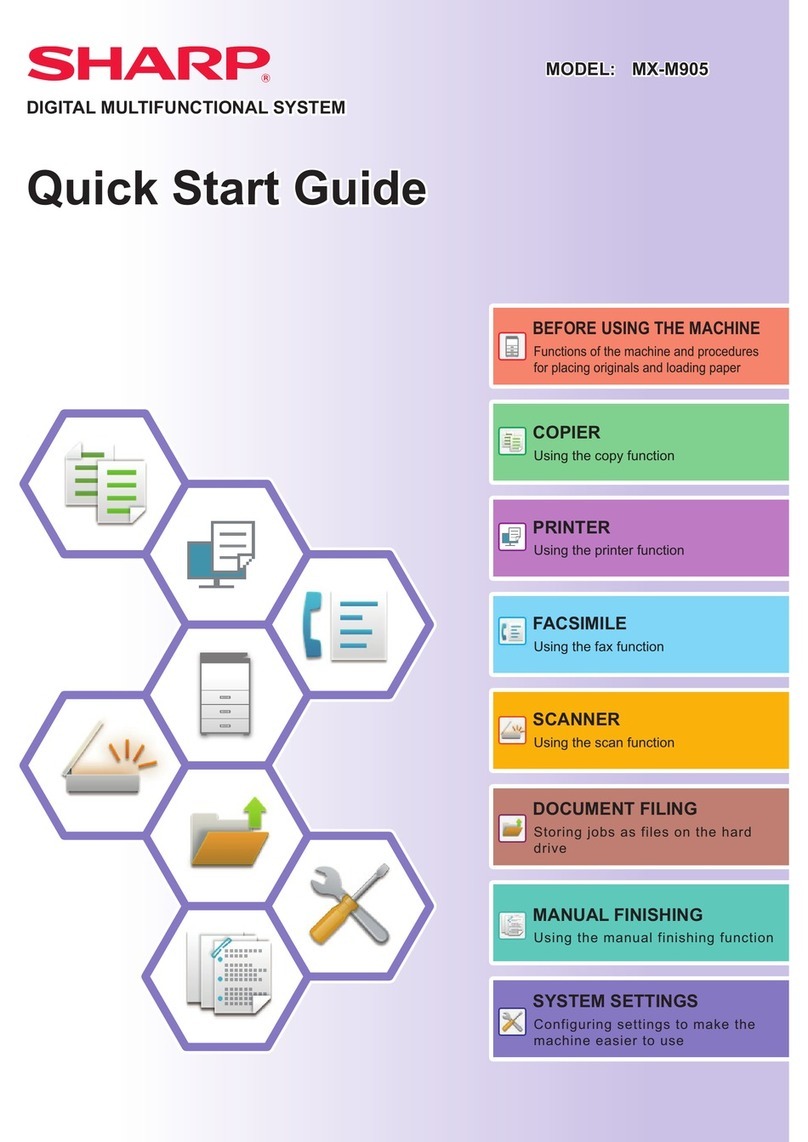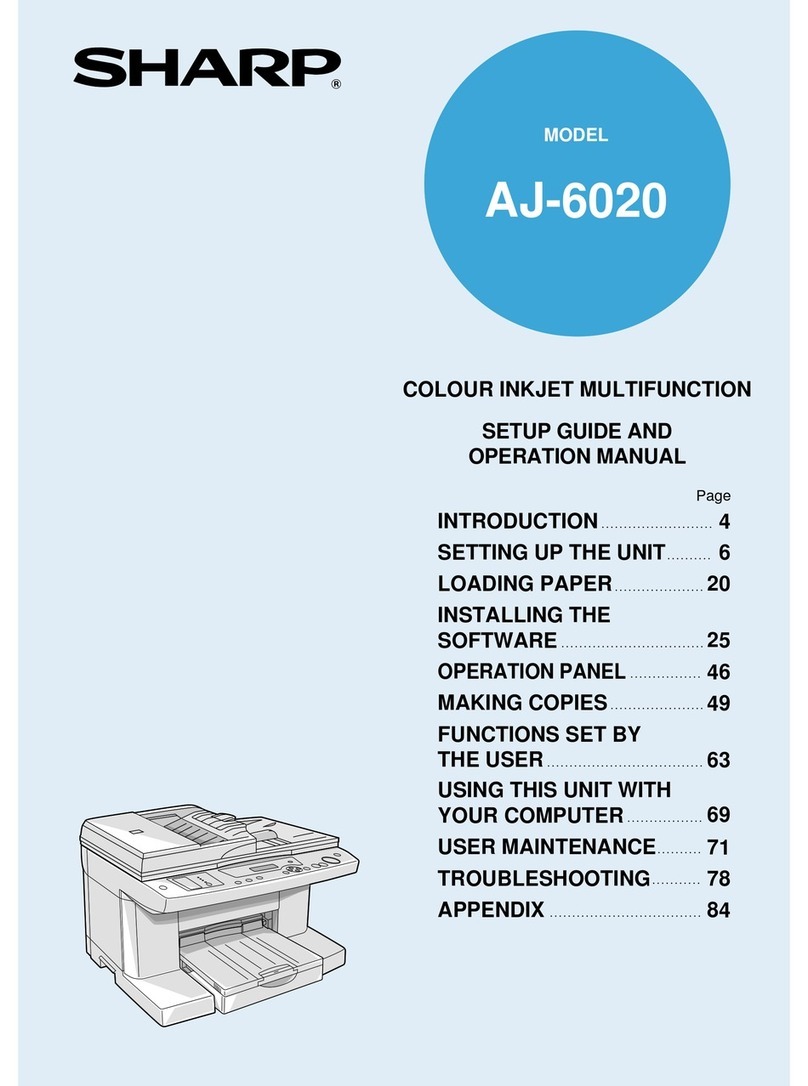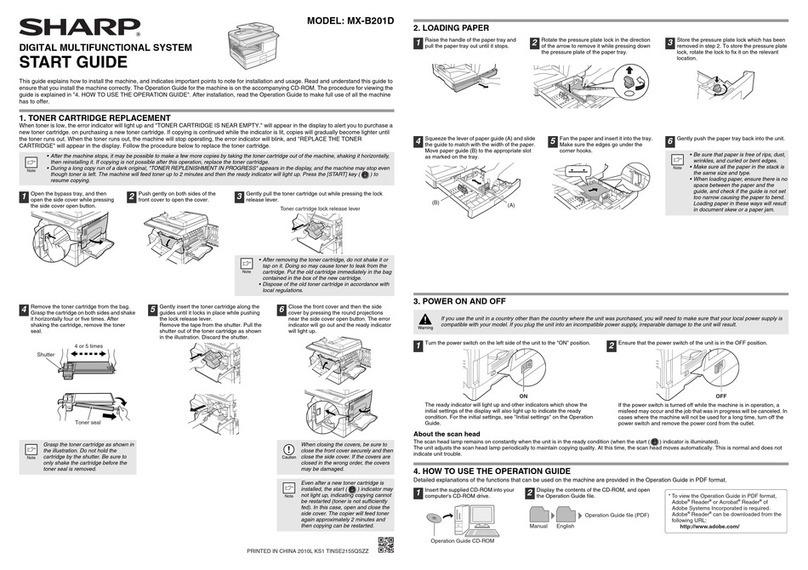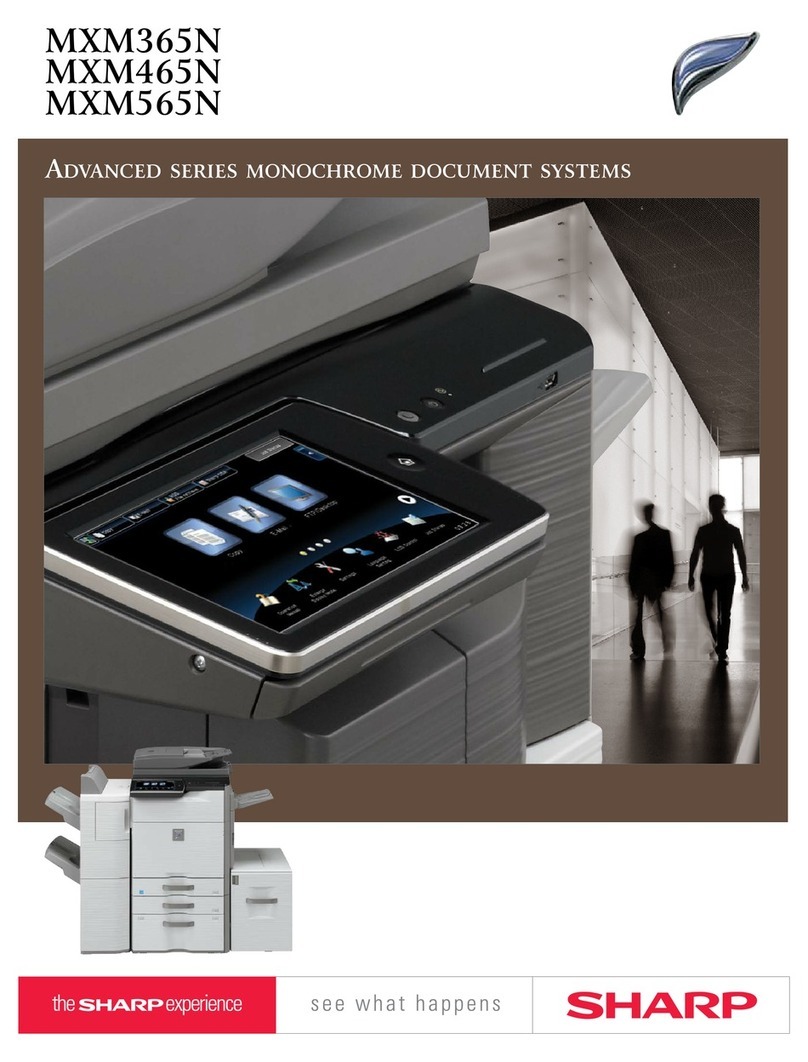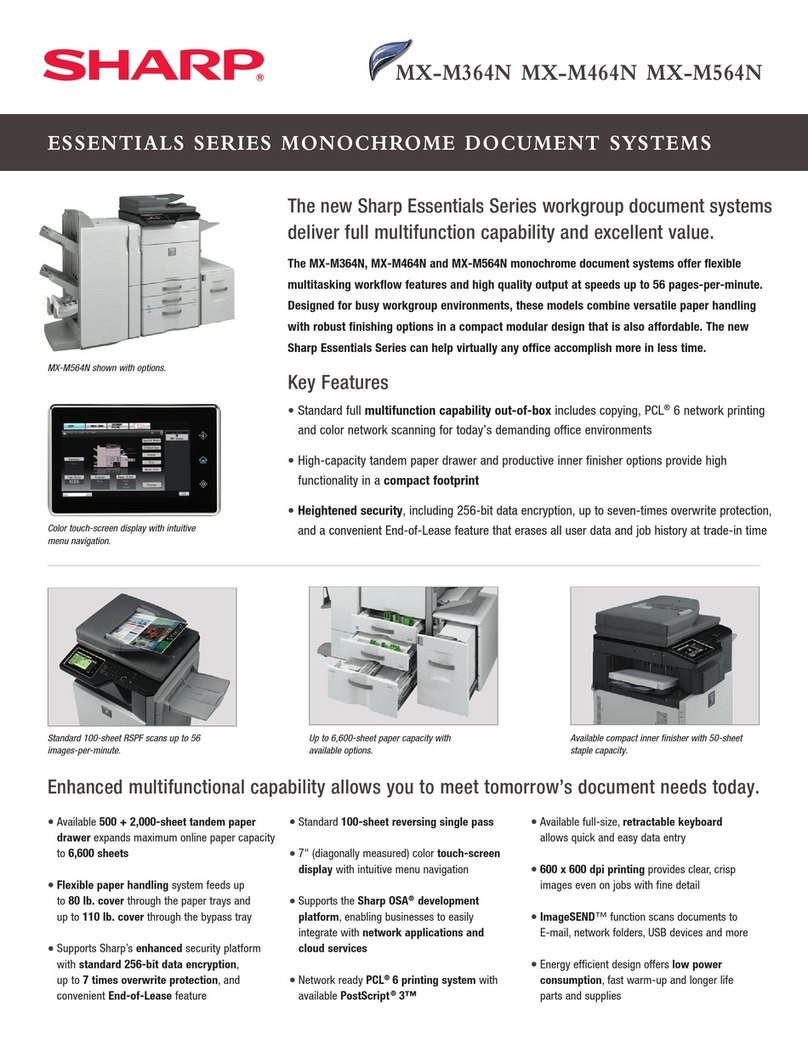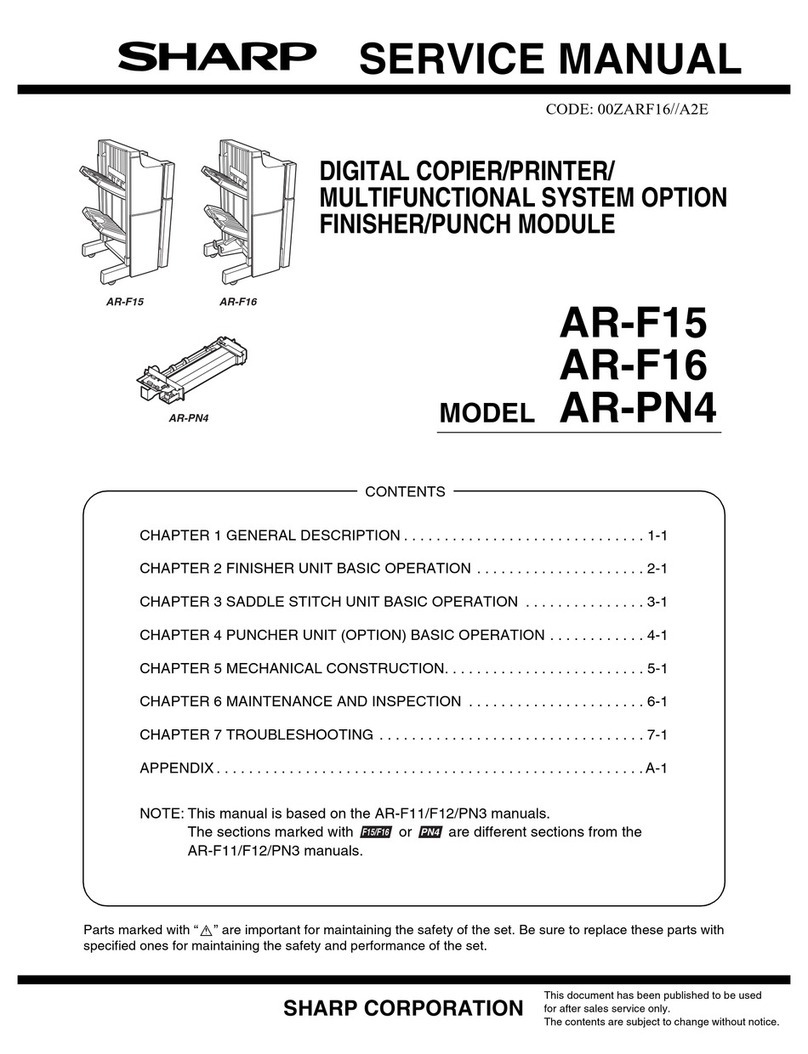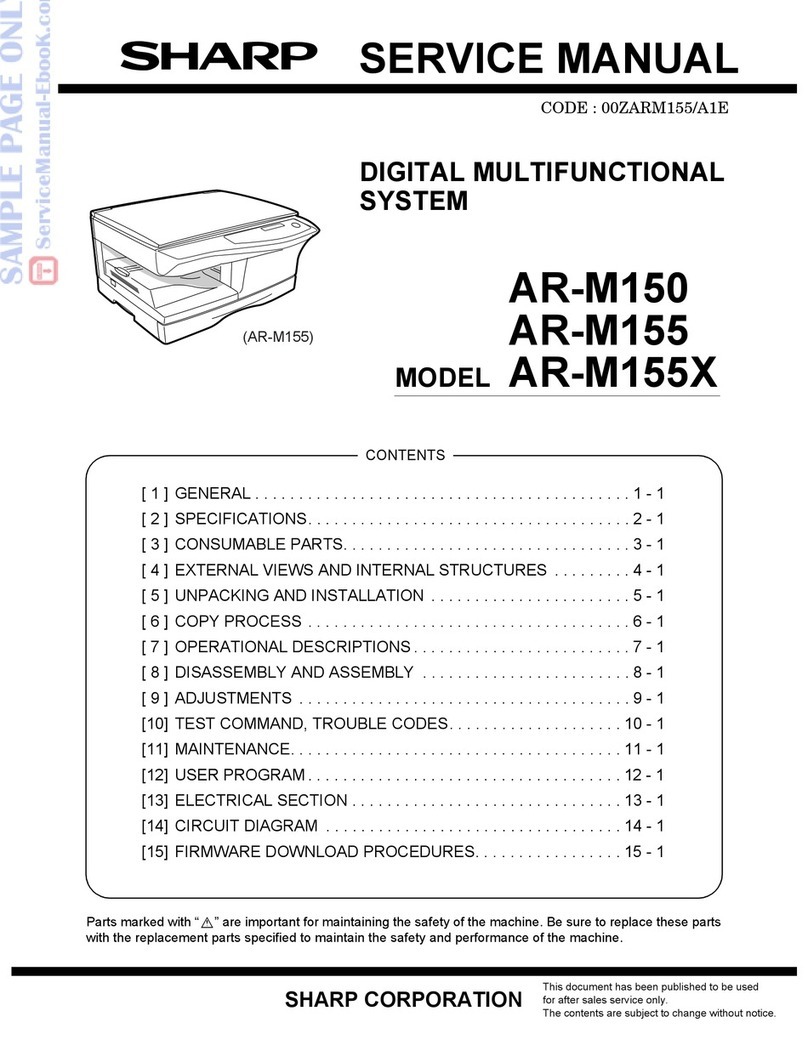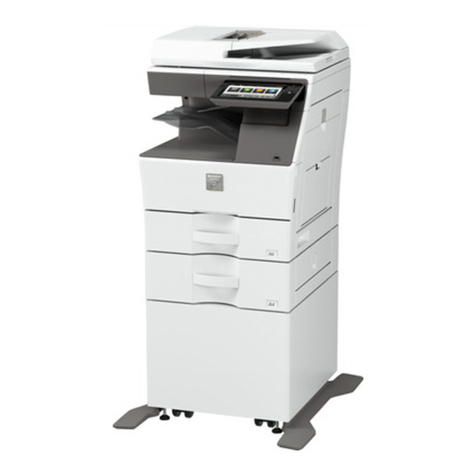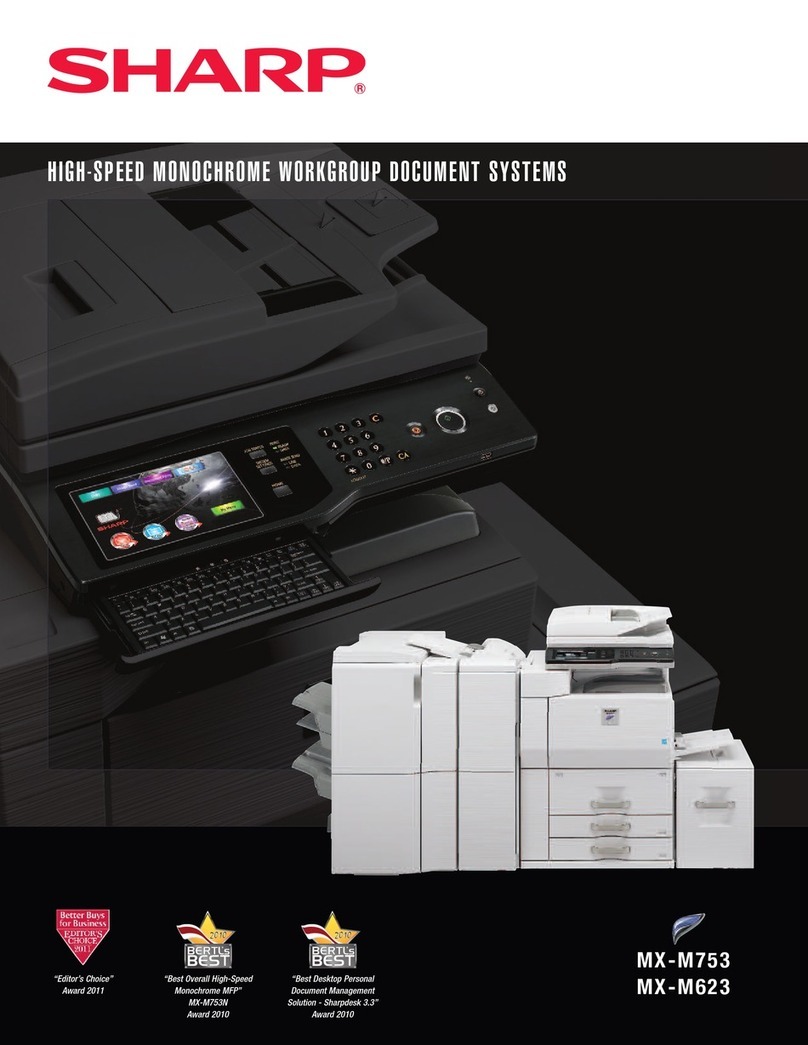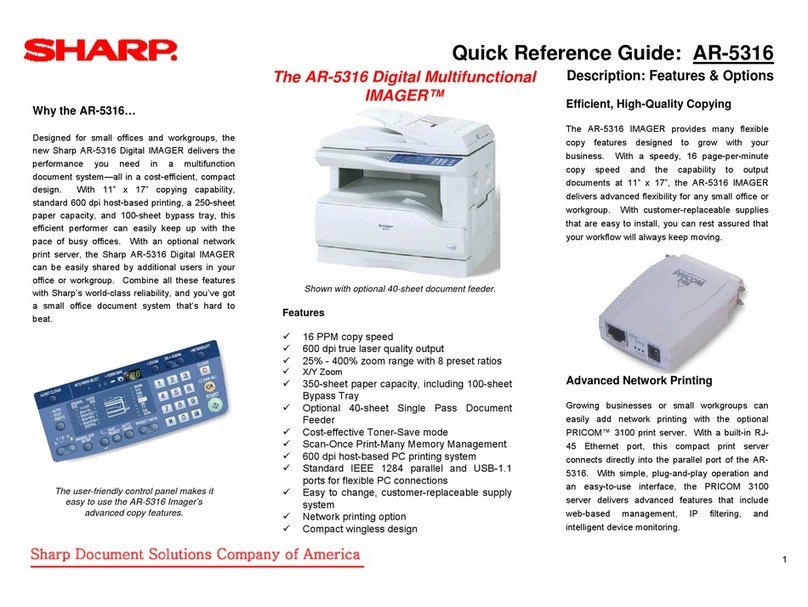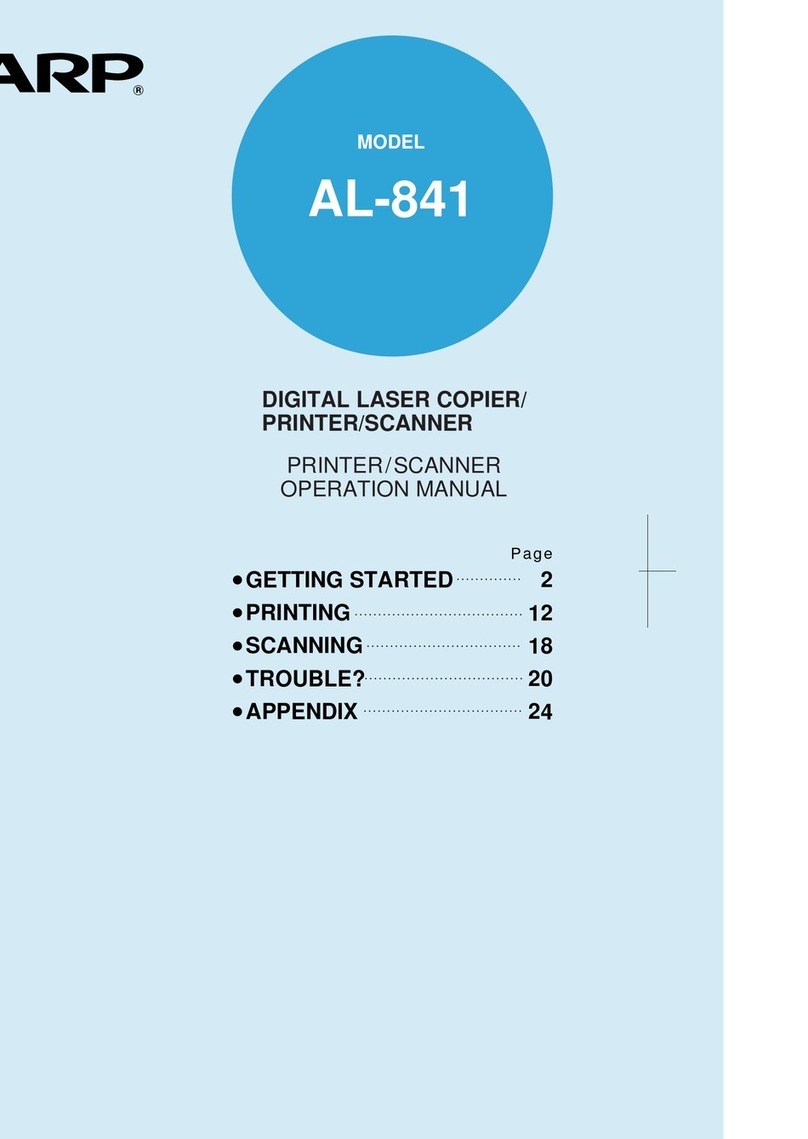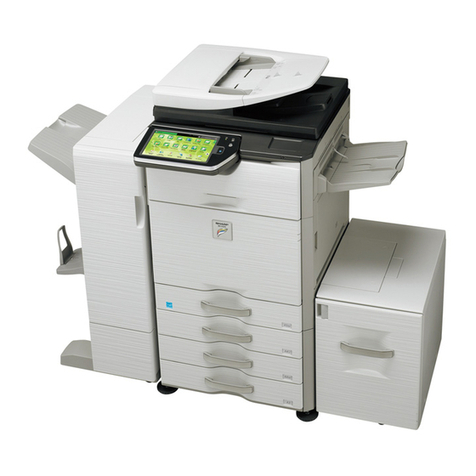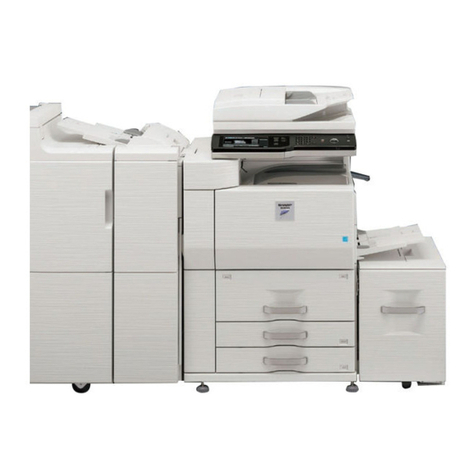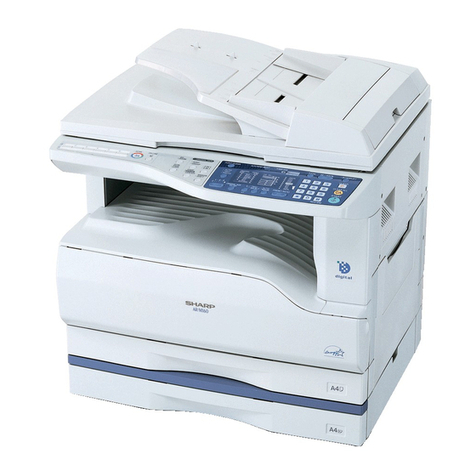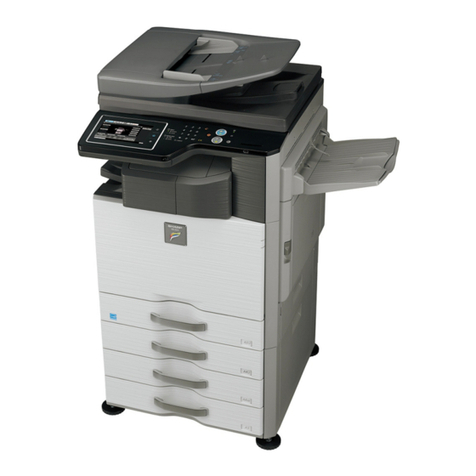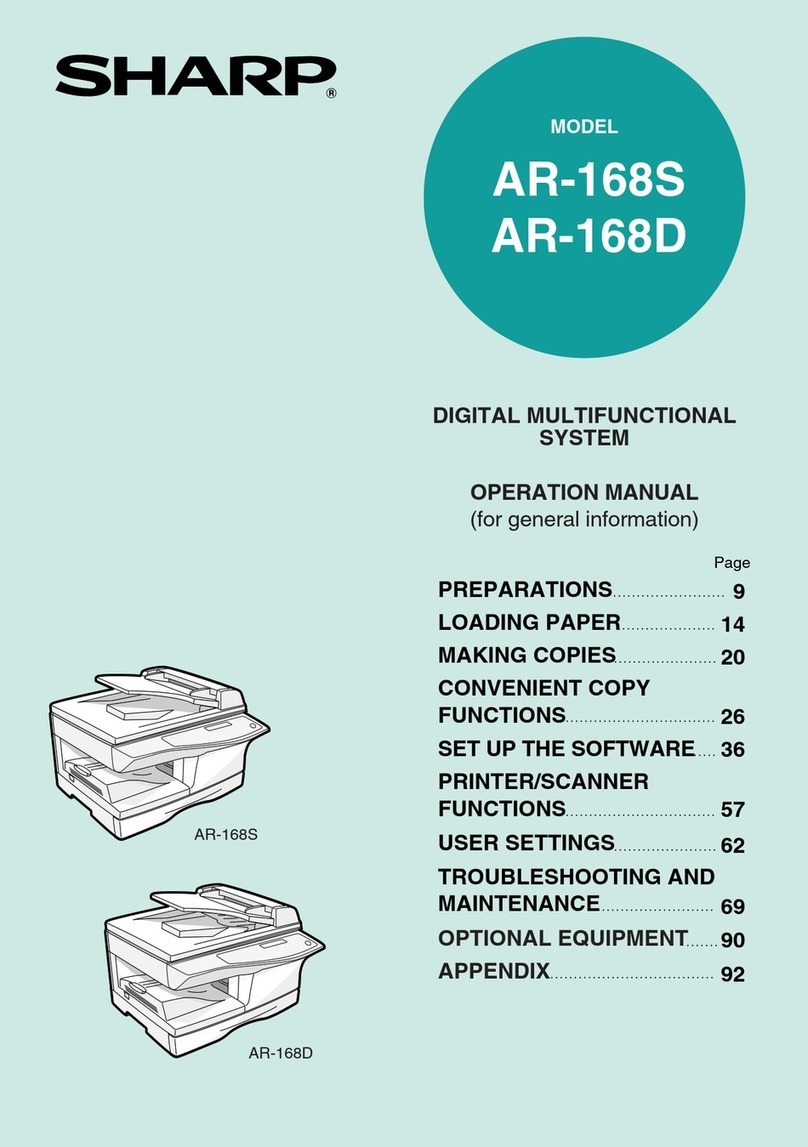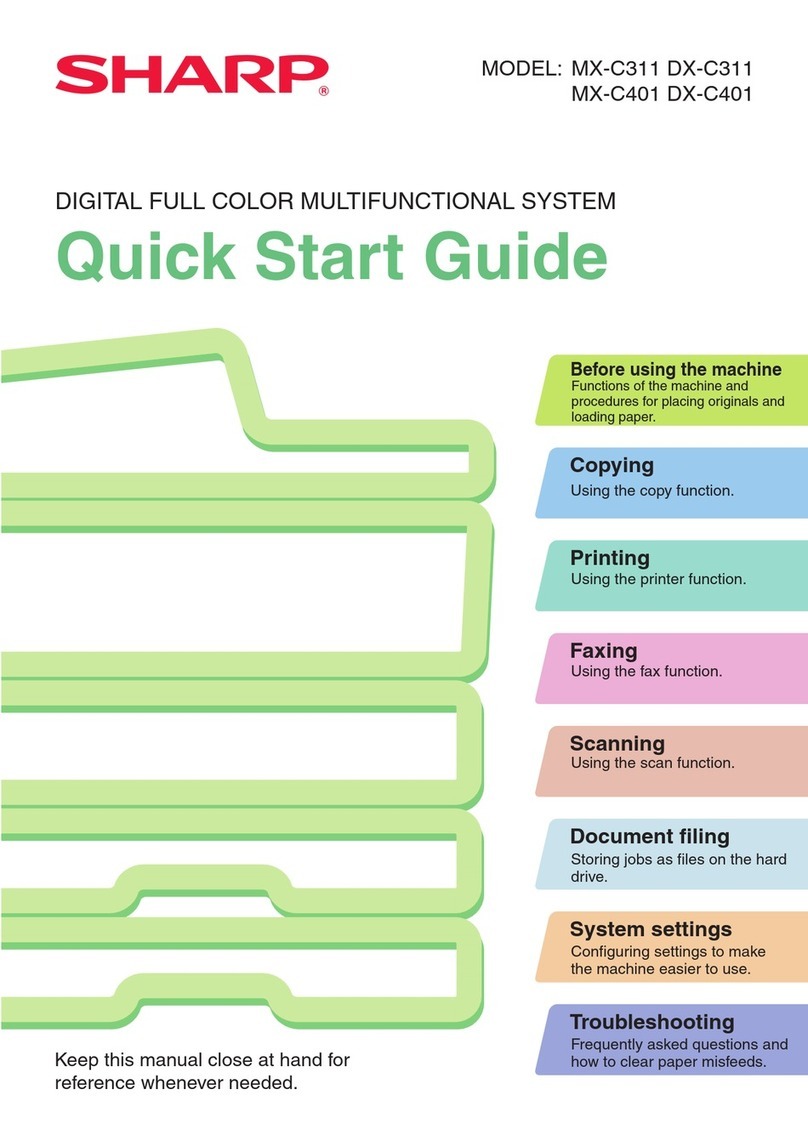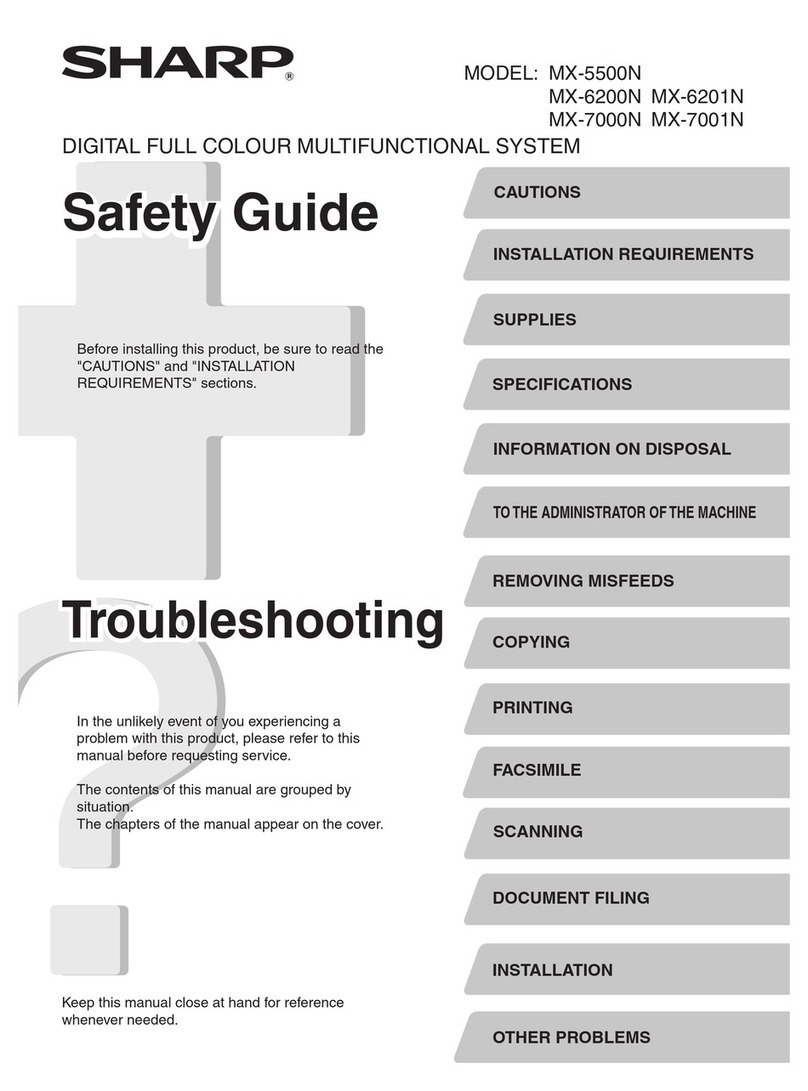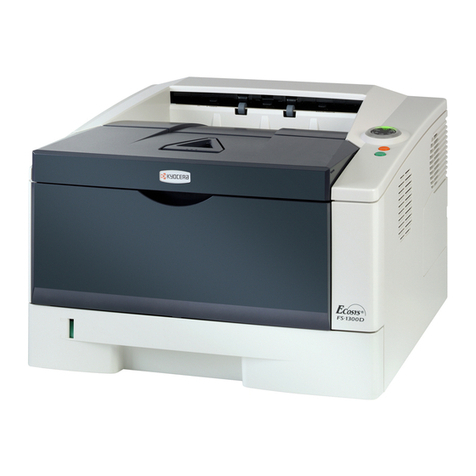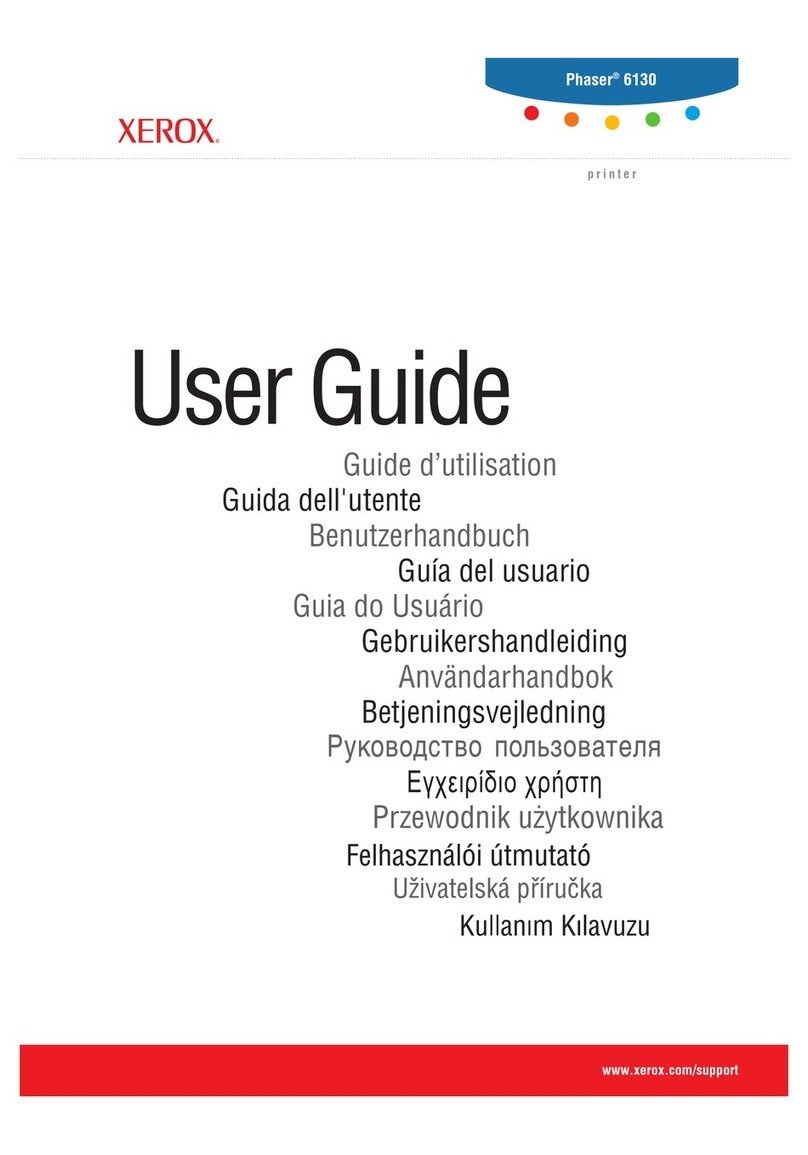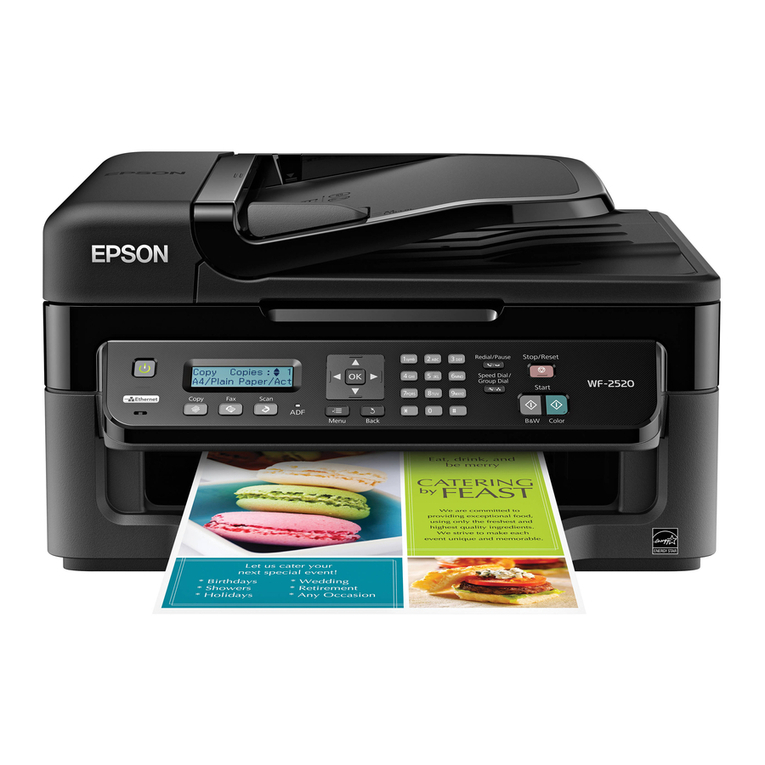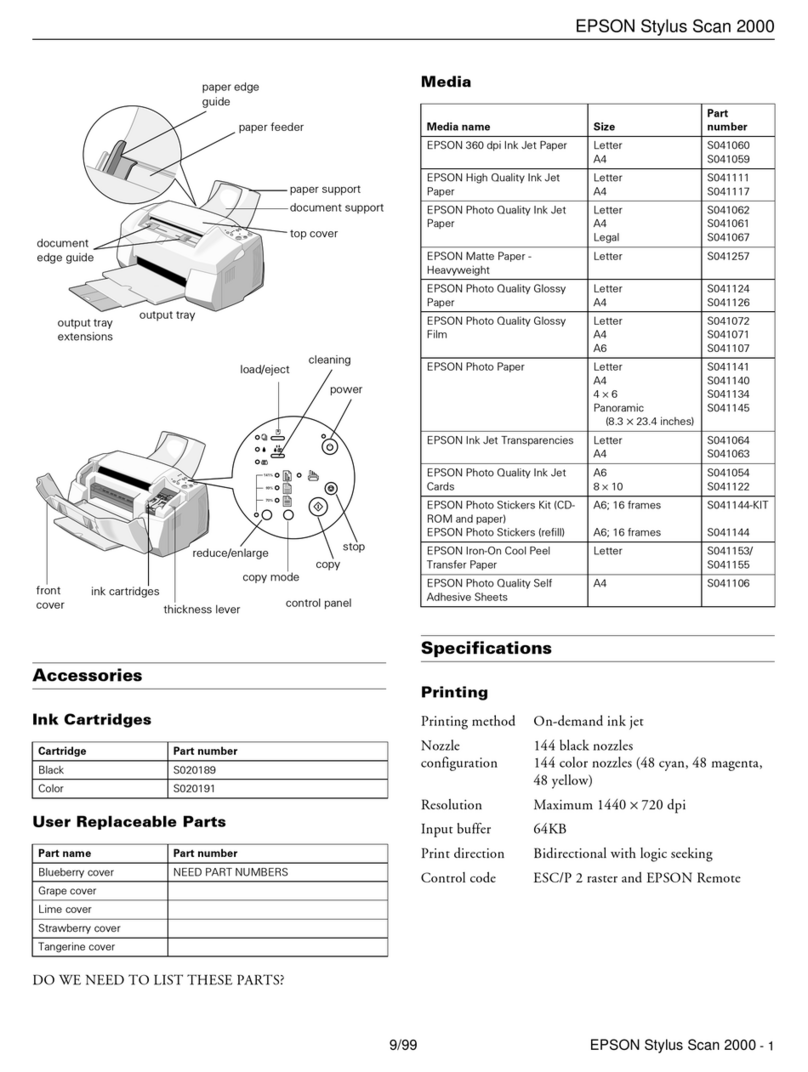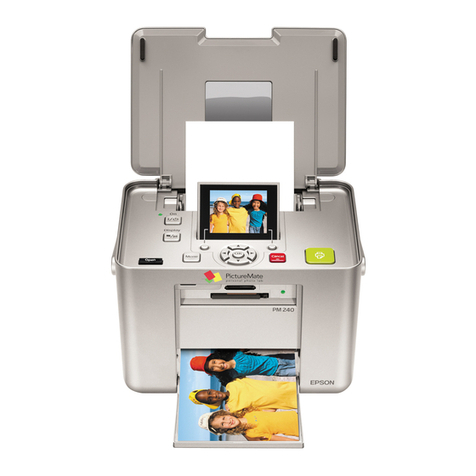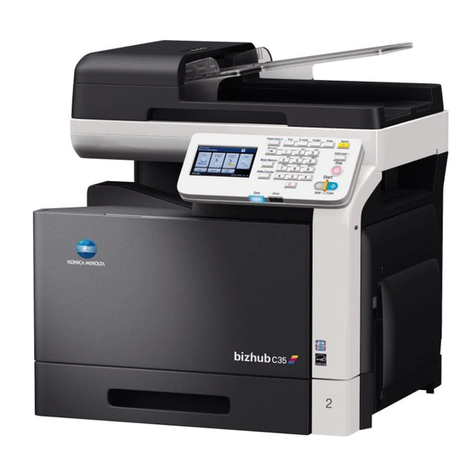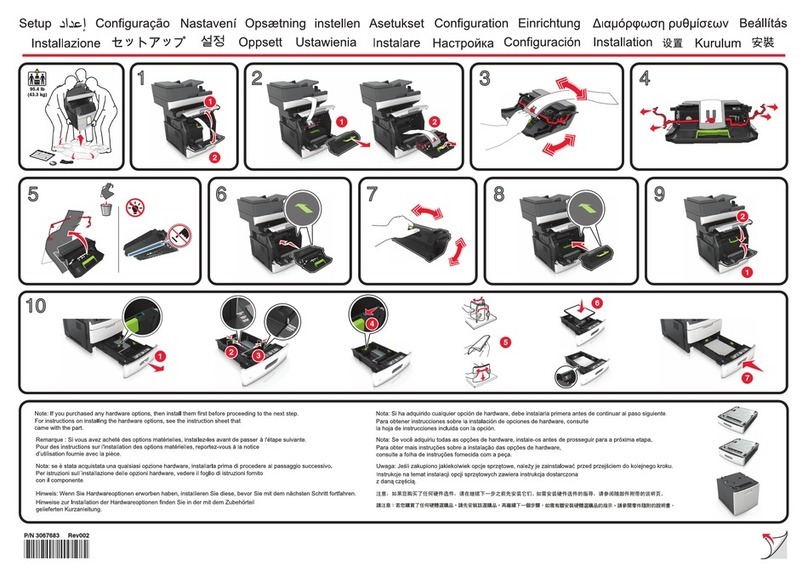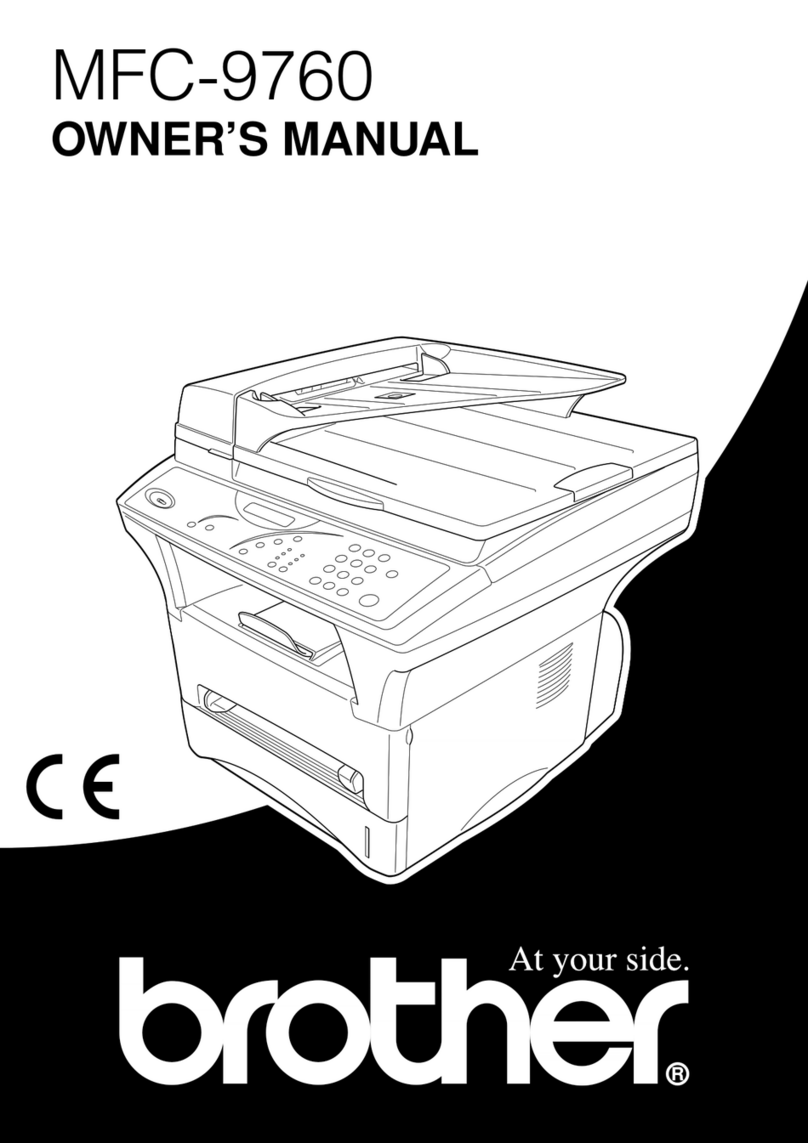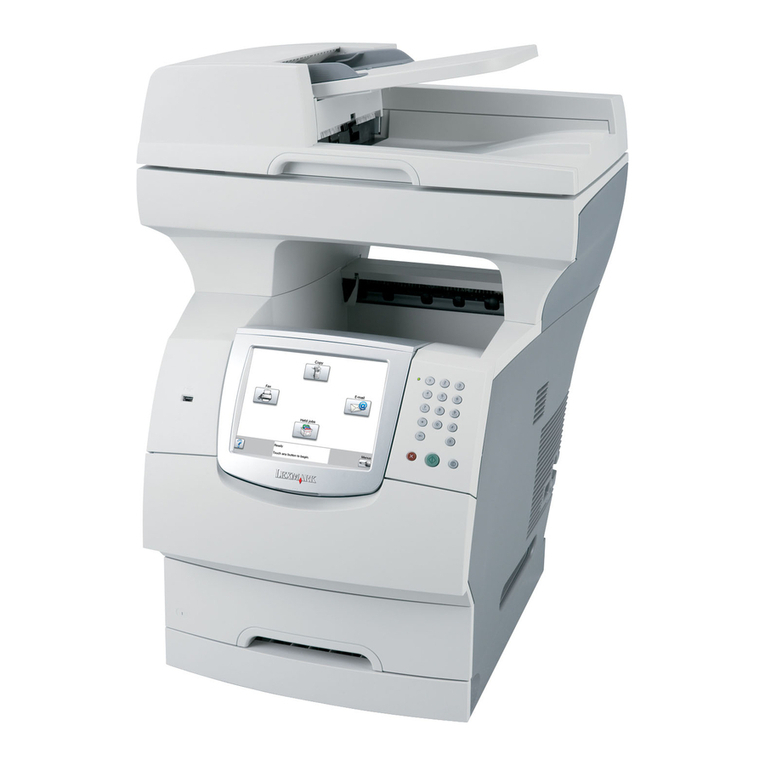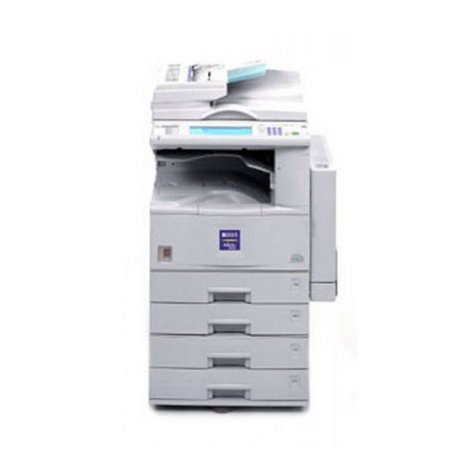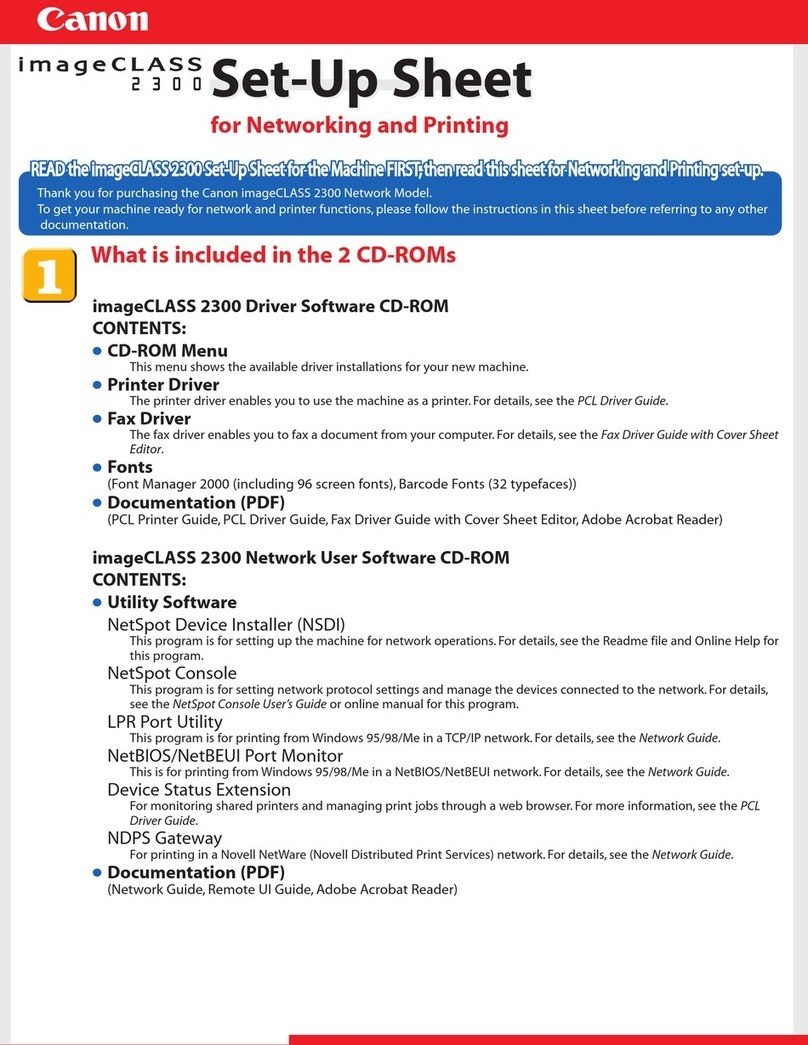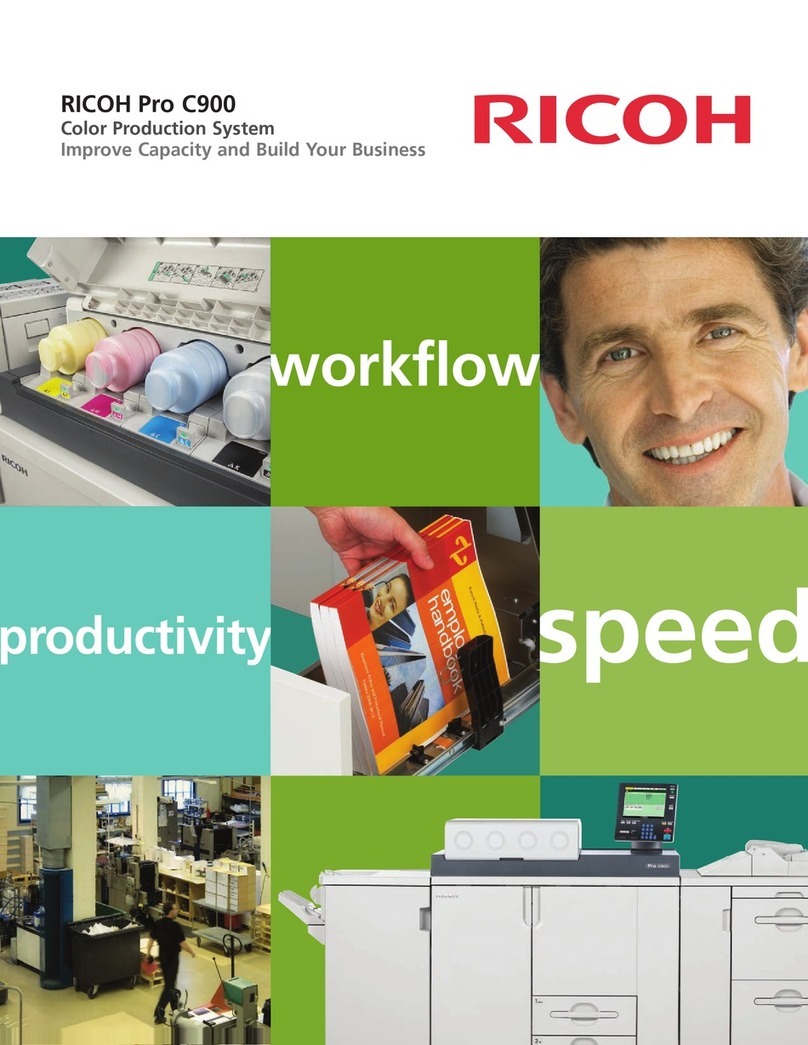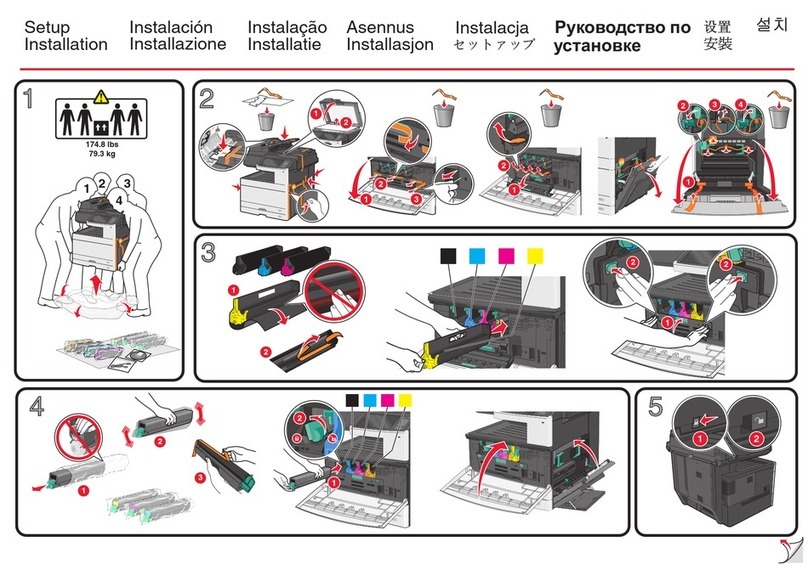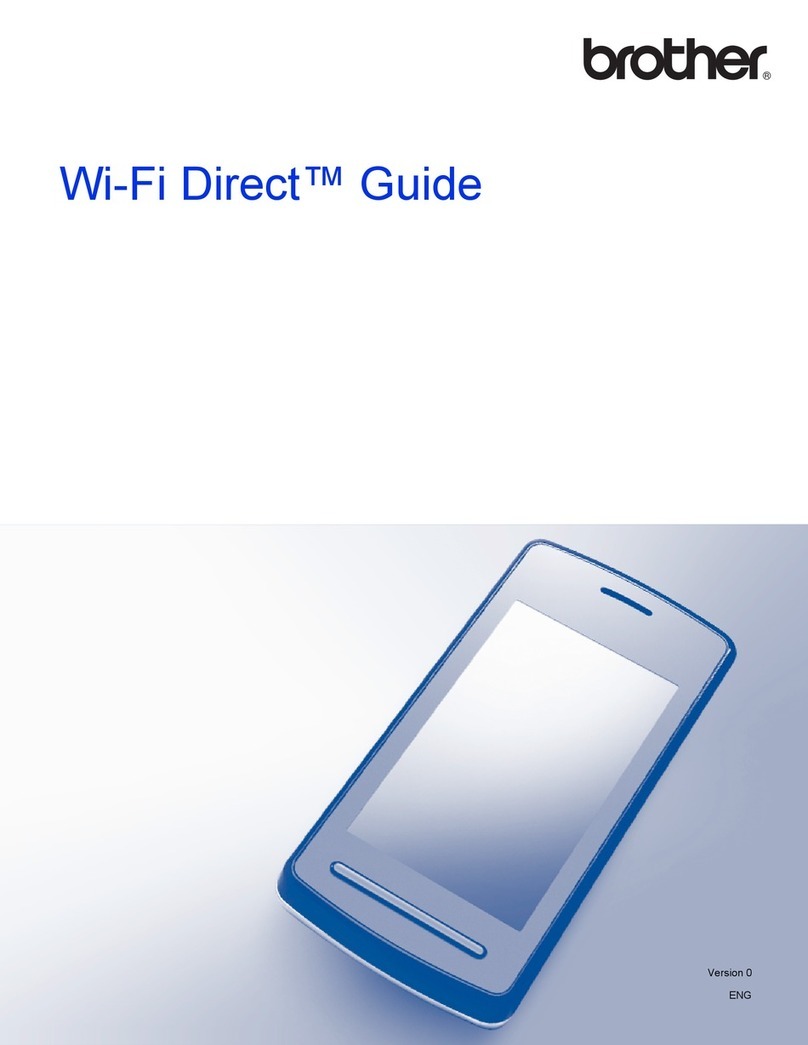
: Jan. 9 2004
1
AR-LC6 OPERATIONAL DESCRIPTIONS 4 - 1
[4] OPERATIONAL DESCRIPTIONS
1. Lift operation
When the main unit is turned ON, if the tray is at the lower limit position
(lower limit sensor: LLD ON position), the lift motor is turned ON to lift
the tray.
When the paper presence/empty sensor (LPED) is turned ON within
800 pulses of the encoder signal from start of lifting up the tray, the lift
motor is turned OFF to stop the tray, and the paper feed solenoid is
turned ON to mode down the pickup roller. After that, the lift motor is
turned ON to lift the tray. The tray is stopped when the upper limit sen-
sor (LUD) is turned ON.
If the paper presence/empty sensor (LPED) is not turned on within 800
pulses, the paper feed solenoid is turned ON with the lift motor ON to
move down the pickup roller. Then, the lift motor is turned ON again to
lift the tray. The lift motor is stopped at the upper limit sensor (LUD) ON
position, and the paper feed solenoid is turned OFF.
When the machine power is turned on, if the tray is on the paper feed
position, lifting is not performed.
When the tray is pulled out, it moves down by its own weight.
Lifting up operation (When LPED is turned ON within 800 pulses
of encoder.)
Lifting up operation (When LPED is not turned ON within 800
pulses of encoder.)
2. Paper feed operation
When the tray is stationary at the paper feed position (upper limit sen-
sor: LUD ON position) and there is paper on the tray, paper feed oper-
ation can be performed.
Paper feed operation is performed by the transport motor (LTM), the
transport clutch (LTCL), the paper feed clutch (LPFCL), and the paper
feed solenoid (LPSL) at the following timing.
When the transport clutch (LTCL) is turned ON with the transport motor
(LTM) ON (rotating), the transport roller rotates. When the paper feed
clutch (LPFCL) is turned on under this state, the paper feed roller and
the take-up roller rotate. When the paper feed solenoid (LPSL) is
turned ON, the take-up roller is pushed down to press paper.
LCC paper feed time chart
LLM
(Lift motor output)
LLD
(Lower limit sensor)
LUD
(Upper limit sensor)
LPED
(Paper empty detection)
LPSL
(Solenoid) Within 800 pulses
200 msec
LRE
(Encoder signal)
LLM
(Lift motor output)
LLD
(Lower limit sensor)
LUD
(Upper limit sensor)
LPED
(Paper empty detection)
LPSL
(Solenoid)
LRE
(Encoder signal)
Within 800 pulses
1
LTM
(Transport motor)
LTD
(Transport sensor)
TRC
(Main unit
synchronous signal)
LTCL
(Transport clutch)
LPFCL
(Paper feed clutch)
LPSL
(Paper feed solenoid)
Paper feed start
Clearance-between-
papers control timer
PIC drop timer PIC drop timer PIC drop timer PIC drop timer
Clearance-between-
papers control timer Clearance-between-
papers control timer Clearance-between-
papers control timer
Resist stop Resist stop Resist stop
Paper feed clutch
OFF timer Paper feed clutch
OFF timer Paper feed clutch
OFF timer Paper feed clutch
OFF timer Paper feed clutch
OFF timer
Preliminary
paper feed start
First sheet
Preliminary
paper feed start
Second sheet
Preliminary
paper feed start
Third sheet
Preliminary
paper feed start
Fourth sheet
Preliminary
paper feed start
Fifth sheet
Preliminary paper
feed complete
Paper feed start
Preliminary paper
feed complete
Paper feed start
Preliminary paper
feed complete
Paper feed start
Preliminary paper
feed complete Preliminary paper
feed complete
1
